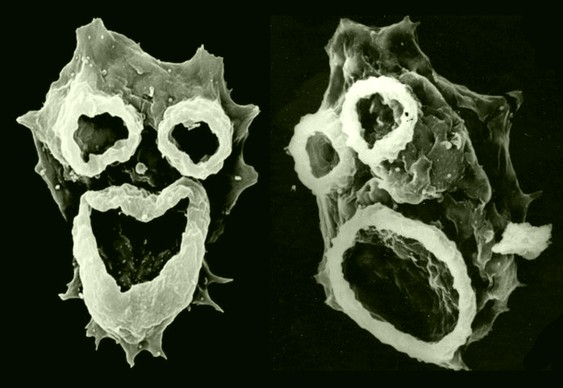
An Ohio teenager who contracted a rare and deadly brain-eating amoeba in Charlotte, North Carolina has died.
A deadly rafting trip to Charlotte, North Carolina claimed an Ohio teenager. But the cause was a brain-eating amoeba. Mitzi Kline, Franklin County Public Health’s director of communication, said Lauren Seitz, 18 years old, died of primary amebic meningoencephalitis (PAM) on Sunday, June 19. The amoeba was found in Seitz’s cerebral spinal fluid, later confirmed by The U.S. Centers for Disease Control and Prevention (CDC).
The amoeba, classified as Naegleria fowleri (N. fowleri), is a rare and deadly brain infection mostly found in soil and warm fresh waters including lakes, hot springs, and rivers, but in can also live in pipes and water systems, the CDC says. The disease isn’t contracted by drinking contaminated water; rather, it enters the body through the nose, and once inside, circulates all through to the brain. Infection is usually fatal.
The North Carolina Department of Health and Human Services said in a statement that Seitz’s “only known underwater exposure” was during a rafting trip at the U.S. National Whitewater Center (USNWC) in Charlotte on June 8. Her raft overturned along with several other attendees that participated in her church’s youth music group. It is at this point the amoeba is speculated to have entered her nose. The other members in the teenager’s raft have not reported any symptoms.
The USNWC said the facility sources its water from two local wells, one located on premises and the other from the Charlotte-Mecklenburg Utilities Department. The USNWC asserted that it thoroughly disinfects all of its water using chlorine and ultraviolet radiation. “The levels of UV radiation disinfection utilized every day, continuously, at the Center are sufficient to ‘inactivate’ the water-born amoeba in question to an effective level of 99.99 percent,” the USNWC said in a statement.
Following the incident, the USNWC said it elevated chlorine levels. Dr. Marcus Plescia, director of the Mecklenburg County Health Department, said that the Center is “as safe as any body of water.” But “Any time you go into a lake or pond, there are things in the water that can cause illnesses,”said Plescia.
In the beginning stages, symptoms resemble those of bacterial meningitis and activate one to seven days following infection. Fever, headache, vomiting, and nausea are common. As the disease develops, confusion, loss of balance, stiff neck, seizures, hallucinations, and loss of attention to one’s environment begin to take hold. Advancement is swift and can cause death one to 12 days after initial symptoms.
Anyone experiencing these symptoms after activity in low and warm waters should contact medical care right away.
Source: TechTimes

Leave a Reply